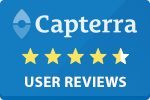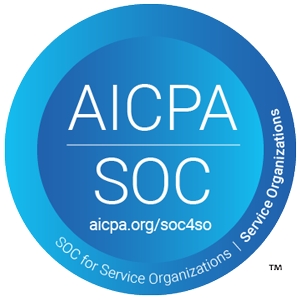Getting Ready For The Ramp-Up: The Power Of Idea Management Platforms
May 6, 2020 by Carsten Tams
The current COVID-19 pandemic has many companies grappling with similar challenges. How can we pivot our product or service offering to prevail in a post-COVID-19 reality? How can we reduce operating costs to ensure business continuity in a tough economy? How can we prepare now for a smooth ramp-up of operations once the pandemic eases sufficiently? How can we organize a return to work that keeps everyone safe and healthy?
All Companies Already Possess Valuable Answers To These Questions
Employees living and working through the COVID-19 pandemic have many ideas for addressing the many challenges it entails. Many companies, though, stick to the conventional crisis response playbook: management by committee. Managers, subject matter experts and consultants convene in endless web-meetings to assess the situation, hash out strategies and push them down into the organization.
While management-by-committee has its place in crisis response, it needs to be complemented with a strategy I like to call Mass Idea Mobilization. This is a swarm strategy that assumes that many of the cognitive resources (experience, knowledge, skills, ingenuity) needed to understand and respond effectively to a crisis are widely dispersed across constituents of a social system rather than possessed by a few extraordinarily insightful individuals. COVID-19 infiltrates and corrupts virtually every aspect of life and work. The resilience of the social system depends on a commensurately diversified response. The best COVID-19 response combines distributed ideation with central coordination.
Technology For Thinking Together At Scale
An increasing number of companies are implementing Idea Management Software to engage in crowd ideation with customers and employees. The list includes the usual suspects such as 3M, BP, Google, HP, Intel, Lego, Microsoft or Nestlé. Crowd-sourcing of ideas, however, is not just for businesses. The London School of Economics (LSE) used an Idea Management Platform to invite ideas from the public for formulating a modern-day UK constitution. Some charitable and non-government organizations are also implementing Idea Management Platforms. World Wide Fund for Nature (WWF) is running innovation competitions to address issues such as conservation, biodiversity and climate change. UNICEF is exploring a similar platform to tap into ideas of its partners on the ground to come up with new ways to improve the lives of children around the world.
Platform providers, including names such as Brightidea, Crowdicity Sideways 6 or Spigit, make it easy for organizations to run ideation campaigns on a continuous basis with an unlimited number of participants. People can post their ideas or vote and comment on the ideas of others. Innovation teams use the system to manage and track idea campaigns, analyze the incoming idea portfolio and to prioritize the most promising ideas for development and funding. IDEO, the famous design company, runs an Idea Management Platform called OpenIDEO, which is focused on crowd-sourcing ideas for social impact. “Today’s challenges require the creativity of entire networks,” says Tim Brown, Executive Chair at IDEO. “Open innovation allows people to collaborate at scale, and that’s changing how the world solves problems.”
Looking For A Crisis Response? Go Ask Your Employees
Companies use Idea Management Platforms to co-innovate with their customers or employees new products, services and processes or to seek cost saving opportunities. When COVID-19 hit and companies were wondering how best to pivot, those with the right tools had a leg up. At a moment’s notice, companies equipped with an Idea Management Platform can turn to their employees, business partners or customers to co-create solutions to shared challenges. Once the impact of the pandemic became obvious, some companies launched idea campaigns to address the urgent problems confronting them.
InGenius at Nestlé
Nestlé, for example, turned to its employees and identified ideas for enhancing health and safety across its sites or for keeping its complex supply chains up and running. According to Nick De Blasio, head of employee innovation at Nestlé, “the impact of crowdsourcing ideas via its platform InGenius is phenomenal. What started with a bottom up open innovation process for IT to solve Supply Chain issues six years ago has grown to accelerate business innovation in areas such as new products, services, sustainable packaging, manufacturing, agriculture and of course in holistically navigating COVID-19. Over sixty thousand employees have directly contributed to innovations so far. These same employees are making new global connections, learning new skills and ultimately solving problems together in a way and at a pace that was previously inconceivable. It’s unleashing the creative potential of our people, and in these volatile times, we all need this more than ever.”
Financial Return On Investment
The financial return on investment can be excellent. Centrica, a large multinational energy supplier, increased the number of ideas it was getting employees five-fold and realized £3.4 million in cost savings just from one of the ideas it had implemented. By comparison, Idea Management Platforms are inexpensive to set up and maintain. A low six-figure dollar amount can get most companies on their way. Not a bad return on investment. These direct financial benefits come on top of less tangible ones such as improved employee engagement or an innovation-friendly company culture. Idea
Management Software should be in integral part of the standard management toolbox. The benefits are obvious and significant. “Most platforms can be set up in the space of a few weeks, and those that integrate with existing collaboration tools, can be up and running in even shorter time” says Chris Sheen, Chief Operating Officer at Sideways 6. “So if you want to tap into the collective wisdom of your employees, the opportunity to move quickly and do so is there.”
Innovative Solutions, Just One Ideation Session Away
But do not let the lack of Idea Management Software hold you back. Anybody who runs meetings or presents in front of large audiences can harness the power of Mass Idea Mobilization, simply by using the basic functionalities offered by standard web-conferencing technology such as ZOOM.
I recently had the opportunity to co-facilitate a presentation at a virtual conference for 120 senior ethics and compliance managers. It included a panel discussion as well as an interactive ideation exercise that challenged participants to come up with ideas for making the design of a website more engaging. From beginning to start, the audience was prompted to chime in with their ideas and comments. The chat room lit up quickly and over the course of an hour, more than 650 comments containing many promising ideas poured in. Following the event, we summarized participants’ contributions and shared them back. What resulted was a comprehensive compendium of compelling ideas for more engaging web design.
Harnessing the creative power of a group does not have to be complicated. Often, all it takes is a clear intention and a bit of facilitation. Some complex problems can be solved within a short time frame and for cheap, simply by focusing the attention of a diverse group on a clearly articulated challenge, and then letting loose everybody’s creative capacity.
Mass Idea Mobilization Produces Unique Benefits.
The ideas that result from crowd ideation have specific qualities and generate unique benefits:
Quantity: Mass Idea Mobilization produces a large volume of diverse ideas. The process takes to heart Linus Pauling’s dictum that “The best way to have a good idea is to have a lot of ideas.” Finding a break-through idea is in large part a function of the ideation rate.
Scope: But building resilience is often not about finding that one panacea. Adapting successfully to a systemic crisis often is about going after the long tail of many small adjustments. For these types of solutions that require finding and fixing many vulnerabilities large and small, swarm intelligence beats individual genius. The unique benefit of crowd-sourced ideation lies in identifying many smallish nudges that can produce a meaningful cumulative effect. Mass Idea Mobilization allows to map out a comprehensive view of the problem/opportunity space in a very short amount of time.
Practicality: Another attractive feature of crowed-sourced ideas is that they are often practical and easy to operationalize. Crowd-sourced ideas originate out of employees’ everyday practice, they are the result of employees grappling with glitches they run up against while going about their daily work and tinkering with solutions.
Engagement: Crowd-sourcing also has an important effect on the people ideating. As we focus our attention on a challenge, try to come up and tinker with solutions, we begin to understand and take ownership of the issue at hand. People understand, value and support what they have helped to build. Behavioral scientists have called this the IKEA effect. By thinking about solutions, we also move from a passive to an active posture relative to the problem we are facing. This helps us regain a sense of control and strengthens our sense of efficacy as agents. Being able to participate also makes us feel valued and nurtures our trust in management’s leadership.
Diagnostics: Crowd-sourcing of improvement-oriented ideas is also a powerful diagnostic tool for organizations. When hundreds or thousands of individuals are generating ideas, themes of similar or complimentary ideas are bound to transpire. These idea clusters can reveal latent organizational opportunities to harness and dysfunctions to fix.
Networks: Large-scale ideation campaigns allow companies to identify allies in the organization who champion improvement ideas that rank high on management’s agenda. These individuals are valuable partners for prototyping and piloting those ideas. Management can advance its own change agenda simply by nurturing employee ideas that align with its own priorities.
These benefits are unattainable by traditional forms of crisis management that rely on small groups of experts for central planning and control. Idea Management Platforms make possible a quantum leap in how organizations manage organizational change. Individual intelligence retains its value, but Idea Management Platforms generate an emergent form of intelligence that is a property of the system as a whole. Not unlike swarming behavior in nature, a crowd-sourced approach allows organizations to adapt with greater agility to signals in its environment.
When Companies Listen, Everyone Wins
The challenge posed to companies by COVID-19 is complex. Leaders need to mobilize the whole company in a collaborative effort to stem broad-based business disruptions such as COVID-19. An effective response needs to be comprehensive and well-informed about the many ways in which the epidemic affects a business across the entire range of its operations. Who better to ask than the people who know every nook and cranny of your business: your employees?
More than ever, companies are challenged to adapt and innovate their ways of doing business. Now is the time to put in place the infrastructure to embed a culture of innovation at the heart of the organization. It will help companies not only to stem the current epidemic, but also to instill the innovation-friendly culture they need to adapt and succeed in the new normal of the post-pandemic world. Good leaders come up with bright ideas. Great leaders create the infrastructure for ideas to light up across the entire business.

